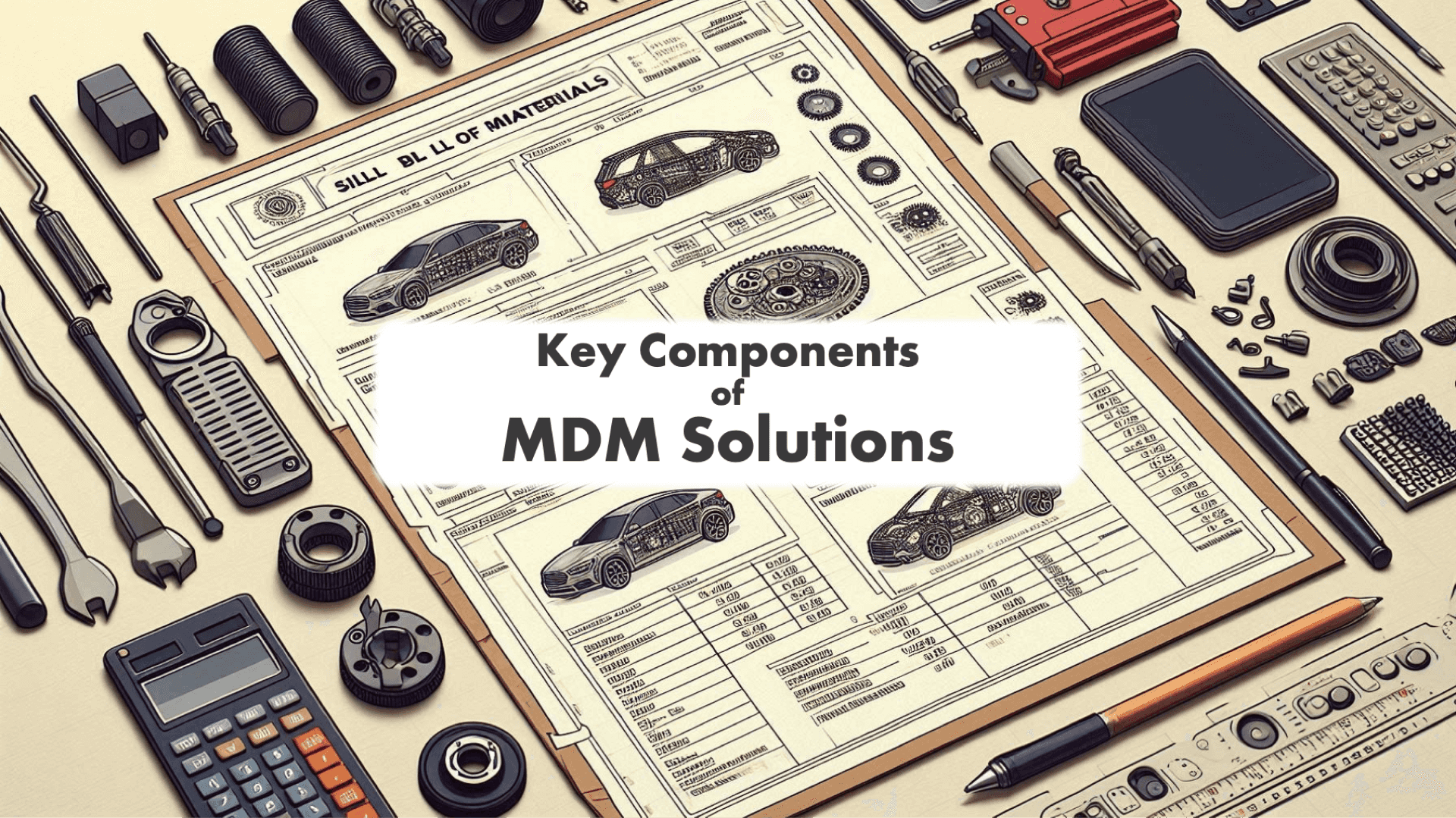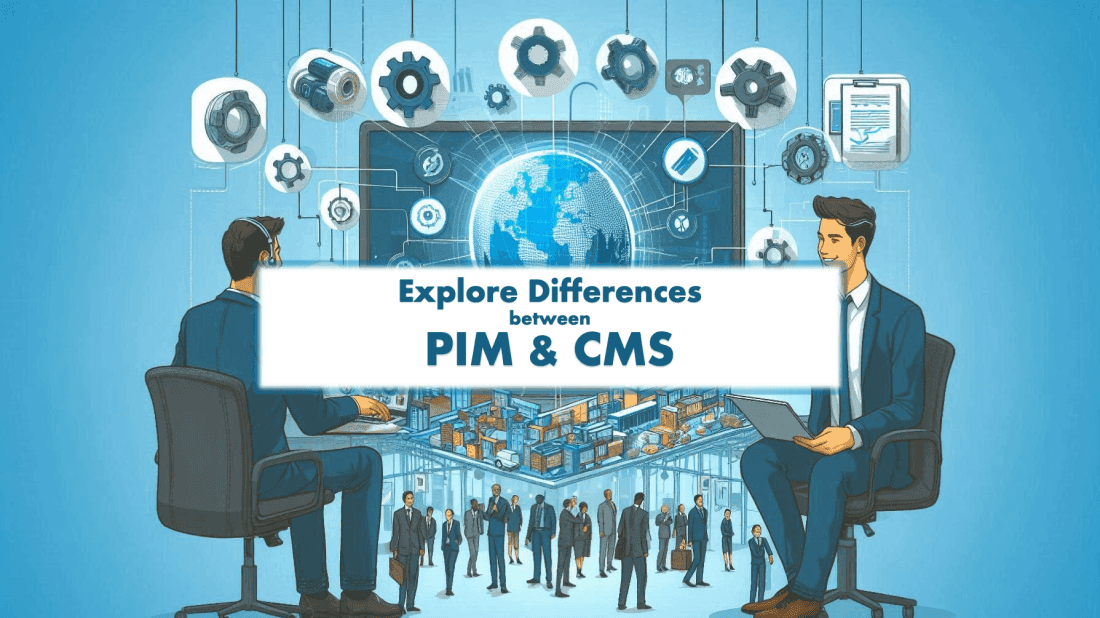Jun 11th, 2024
Transforming Product Information Management with PIM Solution
Categories:Product Information Management SystemDiscover why PIM software outperforms traditional spreadsheets in managing product information for manufacturers.
PIM systems offer a robust solution for managing product data, ensuring accuracy, consistency, and efficiency. This guide delves into the advantages of PIM software over traditional
The Limitations of Spreadsheets
-
Prone to Errors
Spreadsheets are highly susceptible to errors. Manual data entry often leads to inaccuracies, such as incorrect product specifications or pricing. For instance, a simple typo can transform a $100 product into a $1,000 product, leading to customer dissatisfaction and potential financial losses.
-
Lack of Scalability
As your business grows, managing an expanding product catalog with spreadsheets becomes increasingly challenging. Spreadsheets struggle with large datasets, making it difficult to navigate and update product information efficiently. Adding new attributes often requires extensive restructuring, which is time-consuming and error-prone.
-
Collaboration Challenges
Effective product information management requires collaboration across various teams, including marketing, sales, and product development. Spreadsheets lack robust version control, leading to issues such as overwritten data and conflicting updates. This can result in miscommunication and data inconsistencies.
-
Limited Data Relationships
Product data often involves complex relationships, such as variations, bundles, and compatible accessories. Spreadsheets use a flat data structure, making it difficult to represent these relationships accurately. This limitation hampers your ability to manage and showcase products effectively.
-
Omnichannel Limitations
Adapting product information for different sales channels, such as e-commerce platforms, marketplaces, and print catalogs, is a laborious task with spreadsheets. Each channel has unique requirements, and manual data manipulation increases the risk of errors and inconsistencies.
-
Inadequate Data Securit
Spreadsheets offer minimal data security features. Sensitive information can be easily accessed and altered by unauthorized users. Additionally, spreadsheets lack robust audit trails, making it challenging to track changes and ensure data integrity.
The Advantages of PIM Software
-
Centralized Data Management
PIM software centralizes all product information into a single source of truth. This ensures that all stakeholders have access to accurate and up-to-date data. For example, a furniture manufacturer can store detailed product descriptions, images, and pricing information in one place, making it easy to update and distribute information across various channels. The best PIM software ensures seamless data integration and management.
-
Improved Data Quality and Consistency
PIM systems offer built-in validation and enrichment features that enhance data quality. These tools enforce formatting standards and highlight missing information, ensuring that product data is complete and accurate. For instance, an electronics manufacturer can use PIM software to standardize technical specifications and prevent inconsistencies. This is a significant benefit of PIM systems over traditional spreadsheets.
-
Enhanced Collaboration and Workflow Efficiency
PIM software supports role-based access, allowing team members to view and edit data relevant to their roles. For example, the marketing team can update product descriptions while the engineering team manages technical specifications. Version control features track changes, ensuring data integrity and reducing the risk of errors. This makes PIM for manufacturers an invaluable tool.
-
Scalability and Flexibility
PIM systems are designed to scale with your business. They can handle large volumes of product data and adapt to new sales channels and market demands. For example, a clothing manufacturer can easily add new product lines and update attributes like sizes and colors without extensive restructuring. Cloud-based PIM solutions and PIM SaaS models offer unparalleled flexibility and scalability.
-
Seamless Multichannel Management
PIM software facilitates the distribution of product information across multiple channels. It ensures that data meets the specific requirements of each channel, such as e-commerce platforms and print catalogs. For instance, a food manufacturer can use PIM to create channel-specific product descriptions and images, enhancing the customer experience. This is one of the best PIM solutions for businesses looking to improve their multichannel strategy.
-
Enhanced Data Security
PIM systems offer robust security features, including access controls and audit trails. This ensures that sensitive product information is protected and that changes can be tracked and audited. For example, a pharmaceutical company can use PIM software to manage compliance with regulatory requirements and ensure data integrity.
PIM Use Cases in Manufacturing
-
Time-to-Market Reduction
PIM software streamlines product data management, reducing the time required to launch new products. For instance, a toy manufacturer can quickly update product information and distribute it across various sales channels, accelerating time-to-market. The best product information management software can significantly improve your launch processes.
-
Improved Supply Chain Efficiency
PIM systems enhance supply chain efficiency by ensuring that all partners have access to consistent product information. For example, an automotive parts manufacturer can provide distributors with accurate and up-to-date product data, improving order accuracy and reducing returns. This is a critical feature of enterprise PIM systems.
-
Enhanced Product Experience Management
PIM software enables manufacturers to create rich product experiences by integrating images, videos, and other digital assets. For instance, a kitchen appliance manufacturer can showcase product features through detailed images and demonstration videos, enhancing customer engagement. This makes PIM for marketing an effective tool for improving product presentation.
PIM vs. ERP
While both PIM and ERP systems manage product information, they serve different purposes. ERP systems focus on operational processes, such as inventory management and order processing, whereas PIM systems specialize in managing detailed product information for marketing and sales purposes. Understanding PIM vs. ERP can help manufacturers choose the right tool for their specific needs.
PIM Best Practices
-
Establish Clear Data Governance
A robust data governance strategy is critical for successful PIM implementation. This involves defining rules and standards for managing product information and ensuring that all stakeholders adhere to these guidelines. Effective data governance helps maintain data quality and consistency across the organization.
-
Select the Right PIM Software
Choosing the right PIM software requires a thorough evaluation of your organization’s needs and goals. Look for PIM solutions that offer the necessary features and capabilities to address your specific challenges. Consider factors like scalability, integration capabilities, and user-friendliness when making your decision. Assessing PIM features can help identify the best product information management system for your business.
-
Ensure Data Quality from the Start
High-quality data is the foundation of effective product information management. Implement validation rules and quality control measures to ensure that all product data is accurate and complete from the outset. This proactive approach minimizes errors and reduces the need for time-consuming corrections later on. Efficient data import processes are essential for maintaining high data quality.
-
Define Roles and Responsibilities
Clearly defining roles and responsibilities for managing product information is essential for smooth PIM operations. Assign specific tasks to individuals or teams, such as data entry, updates, and approvals. This ensures accountability and promotes efficient workflow management.
-
Provide Ongoing Training and Support
To maximize the benefits of PIM software, provide ongoing training and support to all users. Regular training sessions help ensure that your team is proficient in using the system and stays updated on best practices and new features.
Conclusion
For manufacturers, transitioning from spreadsheets to PIM software is essential for effective product information management. PIM systems offer superior data accuracy, improved collaboration, and scalability, ensuring that your product data is always up-to-date and consistent across all channels. By embracing PIM software, manufacturers can enhance their business processes, improve time-to-market, and deliver a better product experience to their customers. The best PIM software solutions provide a comprehensive toolset to meet the diverse needs of manufacturing companies, from data management to marketing and beyond.
About Neurologik.io
Do you feel like your product team at your company spends way too much time on tedious data administration instead of actual product work?
Neurologik.io streamlines all your product data into one intuitive platform, putting an end to hunting through scattered systems and manually updating information. Our customers cut their data management workload by 80% on average. Imagine what your team could accomplish with all that time saved.
If you’d like to explore how Neurologik.io can massively boost your company’s product team productivity, Contact us for a ProductHub demo today.







